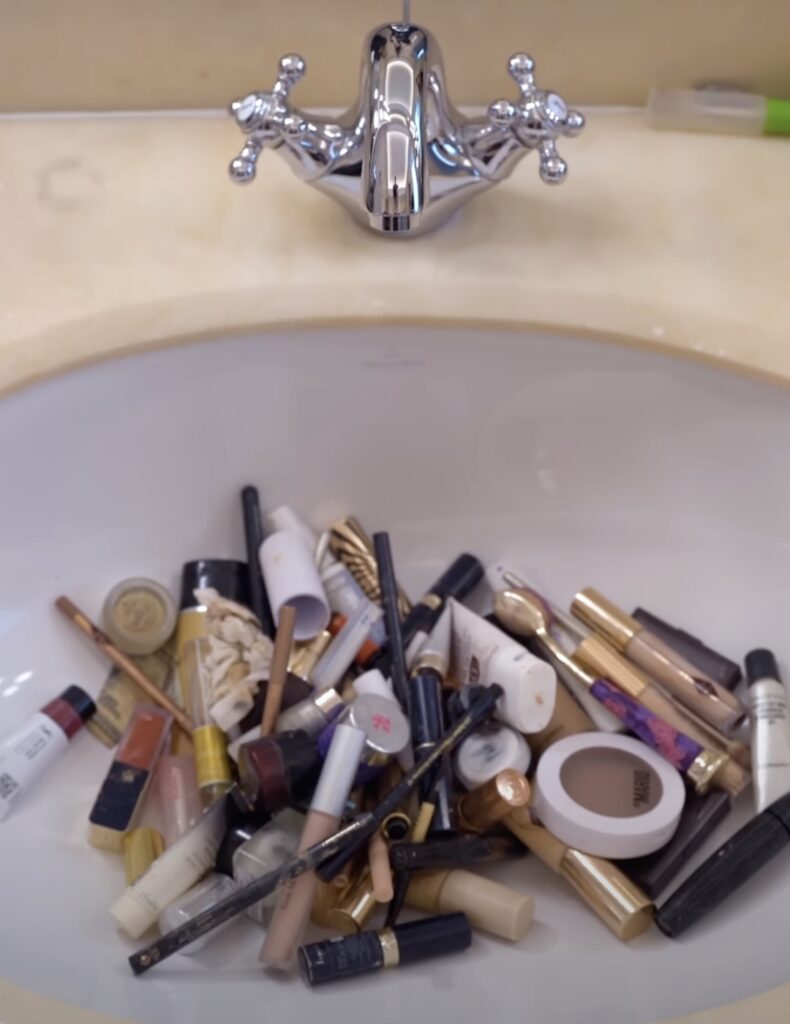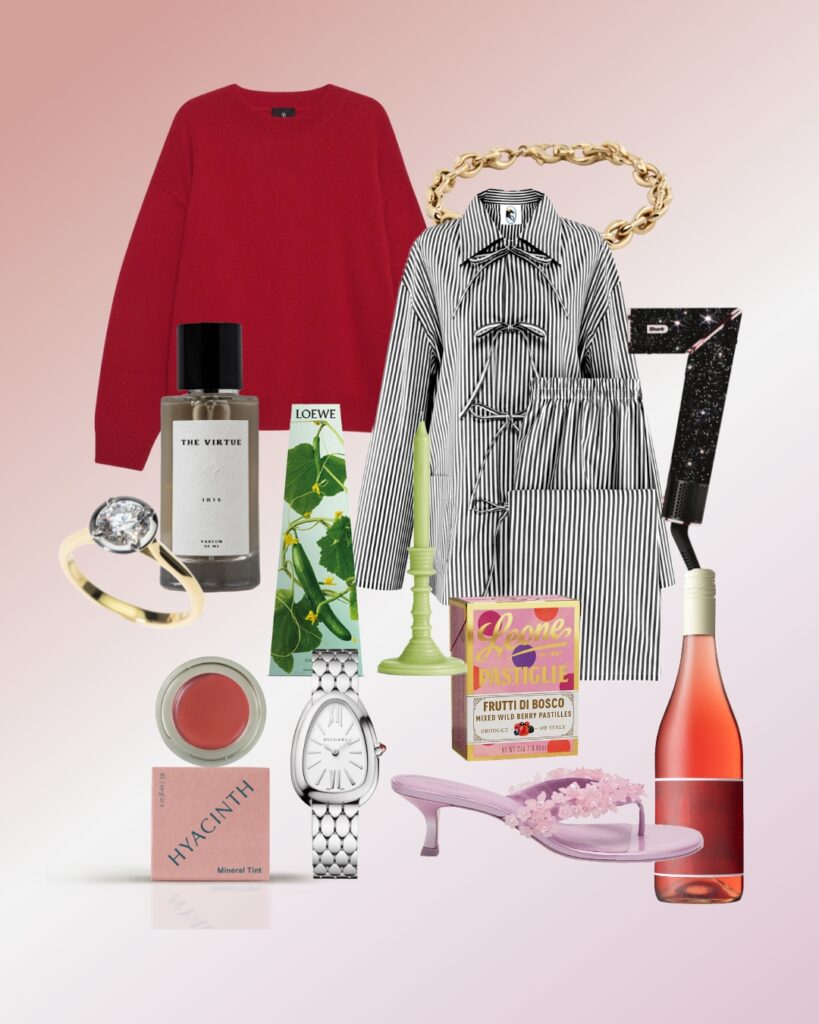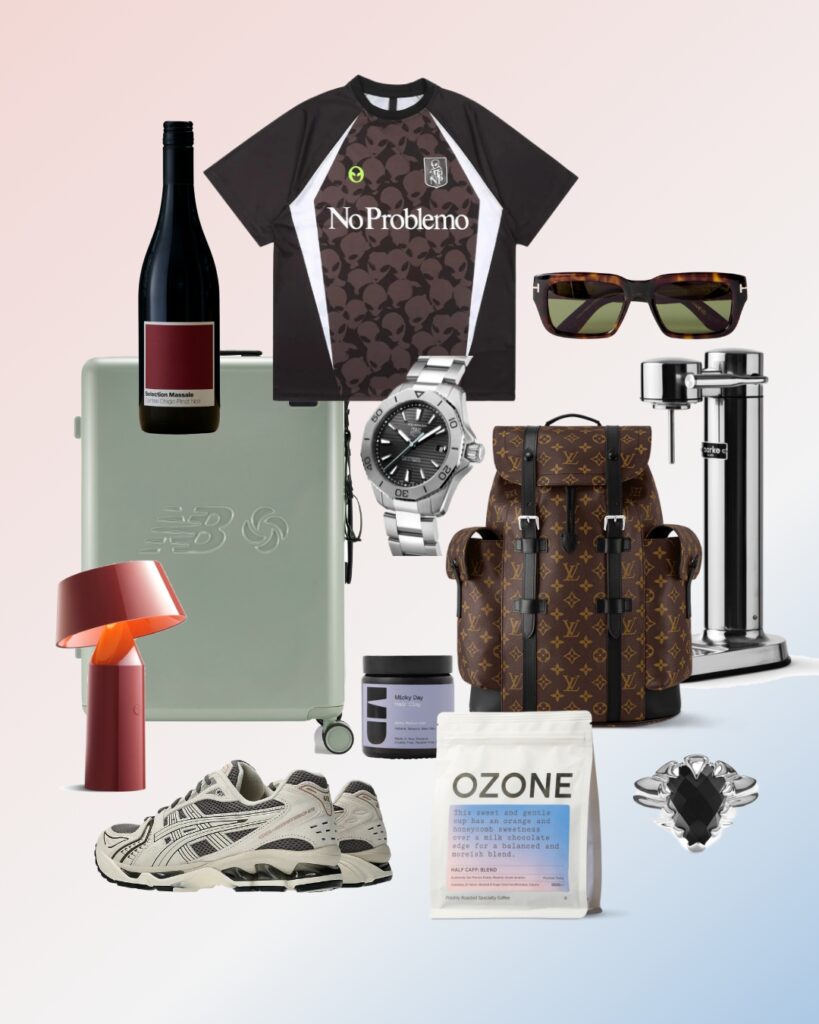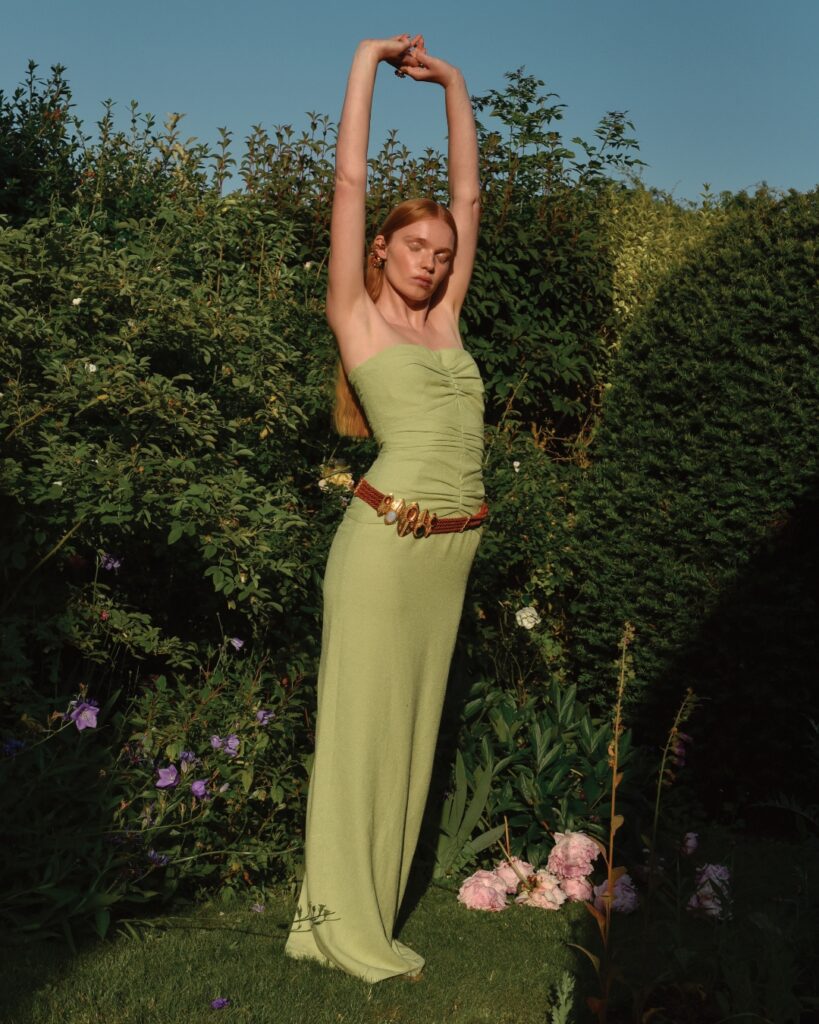
Earlier this year, English actress and singer-songwriter Suki Waterhouse launched the first instalment of her YouTube web series documenting her preparations for Paris Fashion Week. Opening scenes comprise of her stumbling over her suitcase as it balances on the architraves of her hotel room entrance and the contents of her toiletry bags emptied haphazardly into the sink. Post-shower, Waterhouse orders a ream of items off the room service menu and proceeds to shave her legs on her bed. Wearing a robe, a black eye mask, Onitsuka Tiger trainers, and white socks rolled down to her ankles, she strokes a disposable razor up her shins using lotion and water from a wine glass, all the while chatting to the camera as if you were in the room with her, attentively listening from the other side of her dining cart.
The disarray of running late to a fitting, clambering into the wrong van, and censoring herself from touching the immaculately pulled outfits for her at Fendi is later juxtaposed with a supremely serene
scene of her practising Tai Chi in a public park. There are children playing in the background and the grass is blotted with bleached patches from what we can assume is the aftermath of dogs relieving
themselves. Waterhouse is nonchalant and blissfully unaware of these ordinary details as she glides through a sequence of forms. As a team of hair and make-up assistants get her ready for the Fendi show, she smears her dark merlot manicure, requiring a doover, and spills coca-cola into her microphone, causing the rest of her video to sound as though she’s underwater. There is charisma in her chaos, and I, like many, was captivated for every second of the 10-minute episode.
A few weeks later over drinks at new Auckland restaurant Darling on Drake, I joined two of the most stylish, and what I deem to be ‘polished’ women in my circle. (This feels like a fitting moment to acknowledge that polished is not a term I would align with my personal style). Discussing ideas large and small, the topic of Suki Waterhouse’s sink scene came up. The commentary didn’t come from a place of disdain as I would have expected, rather of curiosity and reverence. Is being a hot mess the new (and liberating) benchmark for cool?
Dissecting Waterhouse’s appeal, it’s her access, privilege and grittiness that feels relatable and, therefore, to some degree attainable – a palpable level of imperfection that personifies our industry’s current appetite for an anti-aesthetic aesthetic. Dished up as an antidote to the highly-manufactured and over processed facade of social media, the rise of anti-perfect has catapulted casual – once reserved for behind-the-scenes or off-duty roundups – and secured them at the top of the bill. Audiences no longer want to see the freshly-presented plate of pasta, they want to see the aftermath: the soiled tablecloth, the smudged cutlery, the lipstick transfer on the glassware.
Models, singers and celebrities have cottoned on, publishing increasingly low-quality, pixelated, grainy, and digicam photography in Instagram carousels labelled as ‘dumps.’ It offers social media users reality-based content that’s unpredictable and inherently exclusive, and, unsurprisingly, we’re eating it up. Driven by a complex interplay of sociological and psychological factors, this anti-aesthetic offering of imperfectly stylised lives emphasises the importance of relatability, transparency and our basic human need for connection in the digital age. But now that we know that it’s acceptable to uncensor ourselves, how can we wear our proverbial hearts on our sleeves and inject the personality back into our wardrobes?
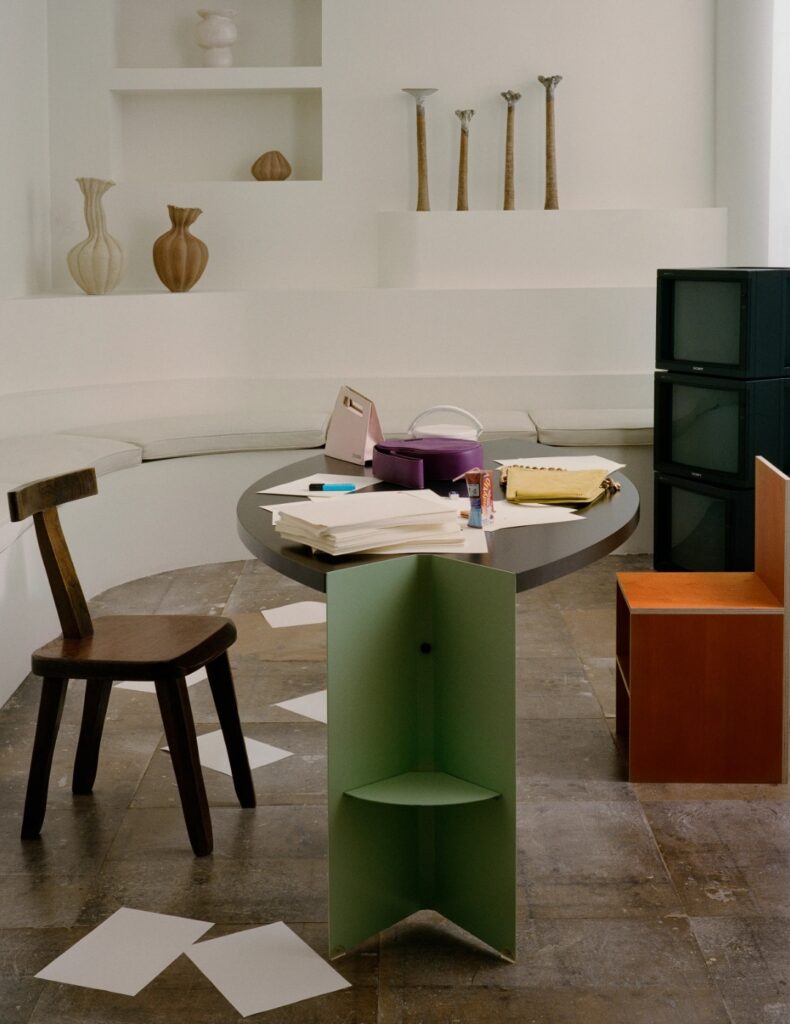

Fashion is often referred to as an armour, providing our egos with this considered curation of being put together, regardless of how we feel on the inside. Cuts, colours, fabrications, and brands become a non-verbal language through which we communicate how we wish to be perceived. What’s liberating about the anti-perfect trend and how it translates into our fashion choices is how it reflects what’s happening beneath the surface, not concealing it. It’s an act of dressing from the inside out, opposed to the outside in. To execute well, it comes from a deep conviction that you’re content with yourself, however unfiltered and messy.
Choosing pieces because you like them, not because you’ve seen them modelled by others. It’s layering something posh and pretty with something boyish and baggy. It’s a tailored suit with sleep socks and gumboot slides. It’s a sports jacket with stilettos. It’s wearing two bags because they serve different purposes and you’re particularly needy that day. Imperfect styling gives you permission to show up as who you are on any given day. You’re not confined to one personal style. Like any art form, if you’re authentic and showing up as a person you believe in, it’s going to translate. Sure, it might raise the heart-rates of your A-type peers, but as Suki Waterhouse so eloquently demonstrated, a little chaos never killed anyone.
Words: Louise Dunn.
Images: Launchmetrics.com/spotlight, HBO, Universal Pictures, Searchlight Pictures, Pinterest.



